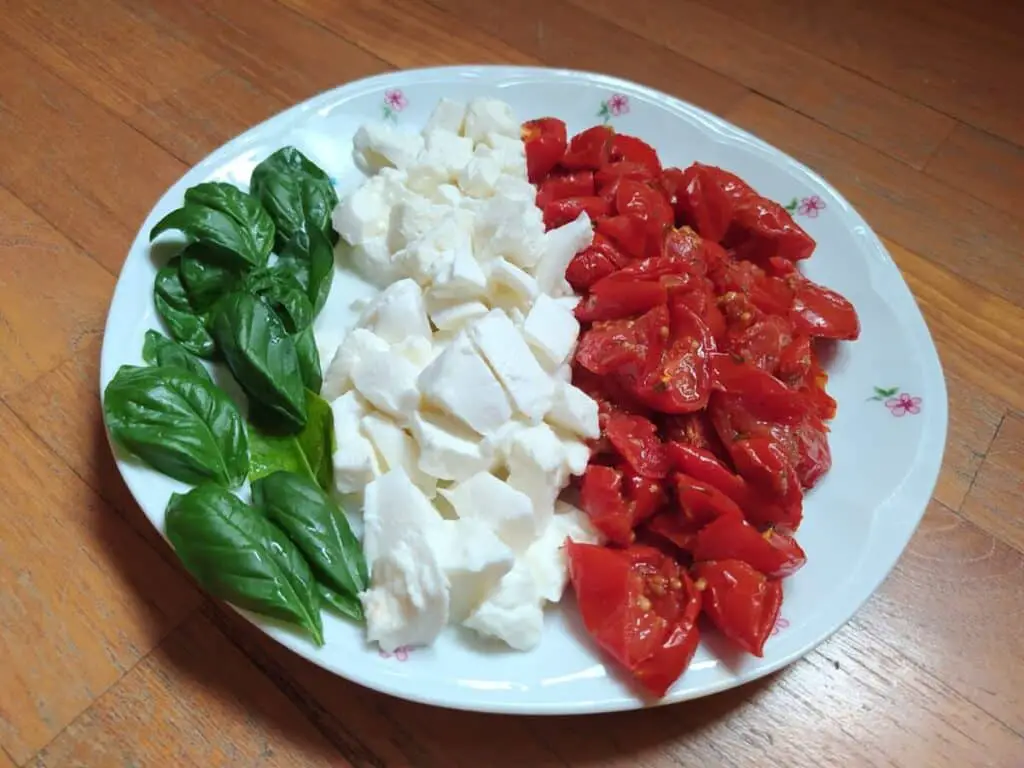Are you an intermediate Italian learner who’s grappling with when to use the infinitive form of Italian verbs?
Understanding Italian grammar can be tricky, especially when it comes to conjugating verbs. If you find yourself puzzled by when and why to use -ere, -are, and -ire endings, you’re not alone.
In this blog post, we’ll take a close look at the Italian infinitive and compare it to English. We’ll cover when to use the infinitive form of verbs, how prepositions are important, and why directly translating from English may not be the best approach.
By the end of this post, you’ll have a better understanding of how to navigate Italian grammar and confidently choose the correct form of the verb in different situations.
Let’s explore Italian infinitives together!
What is the infinitive in Italian? Discover the base form of Italian verbs and how -are, -ere, and -ire endings set the foundation for fluency.
In Italian grammar, the infinitive form of a verb is crucial. It’s the base form of the verb that remains unchanged and serves as the foundation for conjugation.
Verbs in the infinitive form in Italian end in -are, -ere, or -ire. These endings are also an indication of the specific conjugation patterns of a verb. For example, a verb ending in -are such as mangiare change to mangia for “he/ she eats” and a verb ending in -ere such as piangere (to cry) change to piange for “he/she cries”.
The infinitive in Italian consists of one word, not two. It is unconjugated and not connected to any time. I refer to it as the “pure” action, because it expresses the action without attributing it to anyone or anything (that is, without conjugating it) and without making any tense explicit.
In English consider the difference between “I eat” (a verb in the conjugated form) and the action of “eating” or “to eat”, which do not attribute the action to anyone or anything. The latter two would be an infinitive in Italian.
I say to my students that understanding how to use the infinitive in Italian sets the foundation for fluency, because it allows you to transition from basic sentences such as mangio (I eat) to more complex ones, such as vorrei mangiare (I would like to eat).
Infinitive in Italian vs. English: Navigate the pitfalls of direct translation, especially with -ing forms, to avoid common mistakes and confusion.
The infinitive in Italian corresponds to an -ing verb in English (for example, walking) or a verb in the base form such as to walk. Be careful though when translating directly from English into Italian, as not all verbs which end in -ing in English are an infinitive in Italian!
If you are unsure whether a verb in Italian needs to be expressed in the Infinitive or not, ask yourself the following questions:
- Does this verb need to be conjugated? In other words, is this action attributed directly to a person, such as “they walk” or is it a “pure action” such as “to walk” or “walking”? “Pure actions” are expressed in the Infinitive in Italian.
- Does this verb represent the object of an action such as the action of “walking” in “I enjoy walking” or “I want to walk” or “I try to walk”? If the answer is yes, then the verb needs to be expressed in the infinitive.
Some understanding of syntax, or the structure of a phrase, might help you to understand the infinitive in Italian.
Often, you have a main clause which is the one containing the conjugated verb such as I want, I am able to, I prefer and a subordinate clause that specifies what it is you want, what it is you are able to do and what it is that you prefer.
The verb of the subordinate clause is expressed in the infinitive and does not need to be conjugated because it acts as the object of what you want, what you are able to do and what you prefer.
When do I use the infinitive in Italian?
For the following section, I have prepared a list of situations in Italian which require using the infinitive form of the verb. I’ll explain why this is and provide you with some examples and translations into English.
1. Use the infinitive after modal verbs such as voglio, posso, devo
In Italian grammar, certain verbs naturally pair with the infinitive form of another verb. These verbs include volere (to want), dovere (to have to), potere (to be able to), and sapere (to know how to). When these verbs are used, the following verb appears in its infinitive form.
By recognizing these key verbs that call for the infinitive, you can develop speed in spoken Italian in using the correct form of the verb when required. You will notice that, with practice, your brain will work more like that of a native speaker of Italian, where, for example, the verb voglio (I want) immediately primes you for the infinitive that would come next.
For example:
- Mi dispiace, adesso devo andare (I’m sorry, now I have to go)
In this example, the modal verb devo (I must) is followed by the infinitive verb andare (go). One way you could think about this is that andare is the object of what it is that you must do.
2. Use the infinitive after mi piace and preferisco
In Italian, the verbs mi piace and preferisco want to be followed by a verb in the infinitive. Here are some examples:
- Non mi piace svegliarmi presto (which can be translated in English as “I don’t like getting up early” or “I don’t like to get up early)In this example, svegliarmi can be seen as the object or thing that you don’t like to do
- Durante il fine settimana preferisco svegliarmi tardi (during the weekend I prefer to wake up late)
Again, svegliarmi here is the object of your preference. There is no need for it to be conjugated because it’s a dependent clause on the main clause that contains the verb conjugated for “I”, that is, “I prefer”.
3. Use the infinitive after expressions such as prima di, dopo di, and senza
The infinitive in Italian is used after expressions such as prima di… (before doing…), dopo di…(after doing…) and senza… (without doing…)
- Prima di cominciare il lavoro, bevo sempre un te’ (before starting work, I always drink a tea)
From the point of view of syntax, the main clause here is bevo sempre un te’. This is the clause that contains the verb conjugated to “I”, that is “bevo”. The clause prima di cominciare il lavoro, is a subordinate clause that adds further information to the main clause, in this case time information. We don’t need to have a conjugated verb here, because we already know that “I” am the subject of the sentence. Again, the infinitive cominciare can be seen as the “thing” that needs to be preceded by tea drinking in your routine.
4. Use the infinitive when the infinitive acts as a noun
The infinitive in Italian can also act as a noun. More specifically, in grammar terms, it can act as the object or the subject of the action in a sentence.
Examples could be:
- Non ti vedo studiare (I can’t see you studying). In this sentence studiare acts as the object of the sentence
- Mangiare troppo zucchero non e’ buono per la salute (eating too much sugar isn’t good for health). In this sentence Mangiare troppo zucchero acts as the subject of the sentence
5. Use the infinitive with causative expressions that involve having something done, letting something happen or making someone do
Causative expressions are used when something or someone makes something or someone do something. The action that is being caused to happen, in Italian, is expressed in the infinitive.
Here are some examples:
- Faccio aggiustare il tetto (I have the roof fixed)Note that this sentence doesn’t translate cleanly into English from Italian. The Italian literally says “I make fix the roof”, the person that fixes the roof here is implied, not explicitly stated and, for this reason, in English we use the passive form “I have the roof fixed” (by a person who is not specified here).
- Il polline lo fa starnutire (pollen makes him sneeze)
- I bambini non la lasciano lavorare (the kids don’t let her work)
Again, the infinitives in these examples can be considered to be objects, or, in other words, “the thing that is being made, or let, to happen” As such, there is no reason why they should be conjugated to any specific person, they can be seen as “pure actions”.
6. Use the infinitive after certain verbs which are used with prepositions such as a, di, per and da
Often, certain set verbs and expressions in Italian want to be followed by a preposition such as di, da, a or per. The verb that follows this preposition has to be expressed in the infinitive form.
Consider the following examples:
- Sto per partire (I’m about to leave) – note, stare per is a specific expression in Italian that means “to be about to”
- C’e’ troppo da fare (there is too much to do). It’s worth noting that Italian has several expressions built like this one. For example, non c’e’ abbastanza da mangiare, e’ bello da vedere, c’e’ molto da imparare.
- Cominciano a stancarsi ( they are beginning to feel tired) – note, stancarsi is a reflexive verb
- Ti sei ricordato di fare la spesa? (Have you remembered to do the shopping?)
There is a large list of Italian verbs which are followed by the preposition a + infinitive. Examples are iniziare a (to begin to), insegnare a (to teach to) and riuscire a (to manage to).
Similarly, there is a list of verbs which are followed by the preposition di + infinitive, such as cercare di (to try to), sforzarsi di (to make an effort to) and finire di (to finish…-ing)
We understand that these rules around usage of certain verbs in Italian can be frustrating for English speakers. This is because, as a non-native speaker, you have no way of knowing whether an Italian verb requires a preposition or not. Use of the prepositions a or di after a verb does not follow a logic or rule, and therefore relies on memorisation.
If it’s any consolation, however, a strategy that I’ve found to be effective with my students when it comes to these set verbs followed by a preposition, is to think of the action in the infinitive as the “object” or the primary, conjugated, action of the sentence.
Breaking down the examples above:
- In sto per partire (I’m about to leave) the infinitive partire is the object of what you’re about to do.
- In c’e’ troppo da fare (there is too much to do) the infinitive fare is the object of what there is too much of
- In cominciano a stancarsi ( they are beginning to feel tired) the infinitive stancarsi is the object, or the thing that they are starting to do or feel.
and so on….
When it comes to the preposition per, a trick that can be applied is to think that per expresses purpose, intention, an aim or a goal. The action that conveys the goal, aim, purpose or intention needs to be expressed in the infinitive because it’s, again, the “object” or “pure action” that represents your purpose.
For example:
- Molte persone studiano per avere l’opportunita’ di trovare un lavoro ben pagato (Many people study to have the opportunity to find a well-paid job).Here the verb avere, in the infinitive, represents the goal or aim of the action expressed in the main clause (they study).
Conclusion
In conclusion, mastering the Italian infinitive is a fundamental step towards achieving fluency in the language. By understanding the base form of Italian verbs and when to use -are, -ere, and -ire endings, you can navigate more complex sentences with ease.
Avoiding direct translations from English, recognizing the influence of prepositions on the infinitive, and identifying key verbs that naturally call for the infinitive form will streamline your learning of how to use this verb form.





